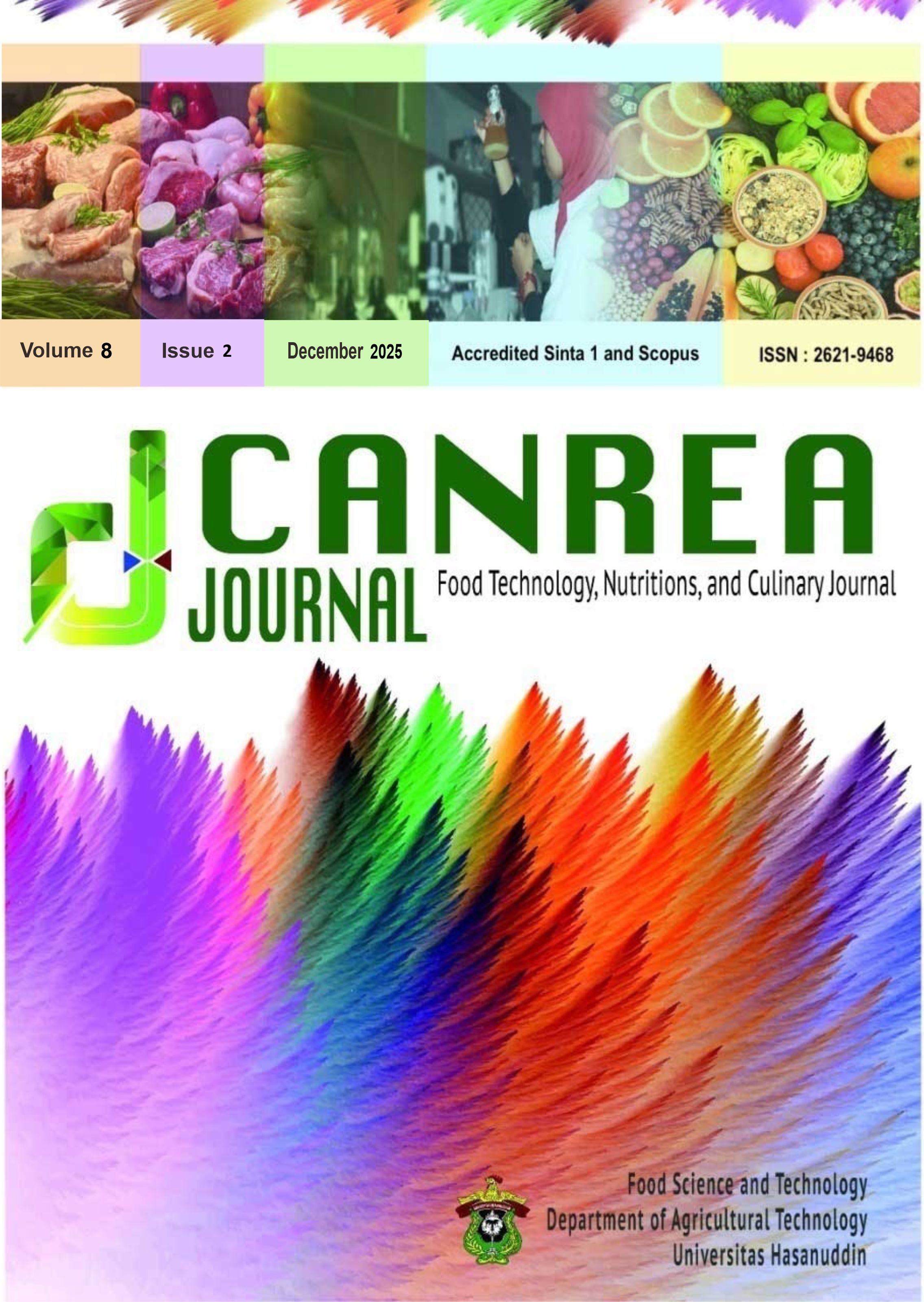Abstract
Jamu, an Indonesian traditional herbal drink, is widely consumed for health maintenance but is often perceived as bitter, pungent, and outdated by younger generations. To preserve this cultural heritage, transforming jamu into kombucha offers both improved sensory appeal and functional benefits. This study examined the characteristics and sensory perception of kombucha made from turmeric and a mix of turmeric–tamarind leaves, evaluated at serving temperatures of 25°C and 9°C. Sensory evaluation employed Rate-All-That-Apply (RATA) and Temporal Dominance of Sensations (TDS), validated using Facial Emotion Recognition (FER) and Facial Landmarks Distance (FLD) analyses via a Convolutional Neural Network (CNN). Results showed that, despite pungent or bitter notes, sourness was the dominant attribute across samples (p < 0.05). Sourness was perceived for a longer duration in kombucha served at 9°C compared to 25°C. Although GC–MS detected bitterness, it did not significantly affect preference (p > 0.05). FER results were dominated by positive expressions (p < 0.05), confirming overall acceptance, while FLD analysis revealed significant changes in five facial landmarks associated with positive emotions. Male participants exhibited more positive expressions than females (p < 0.05). These findings suggest that converting jamu into kombucha effectively enhances its palatability and emotional acceptance, making it a promising strategy to modernize traditional beverages. Jamu based kombucha can thus serve as a culturally rooted, functional drink suitable for Gen Z consumers and adaptable to various serving temperatures.

This work is licensed under a Creative Commons Attribution 4.0 International License.
Copyright (c) 2025 Canrea Journal: Food Technology, Nutritions, and Culinary Journal


